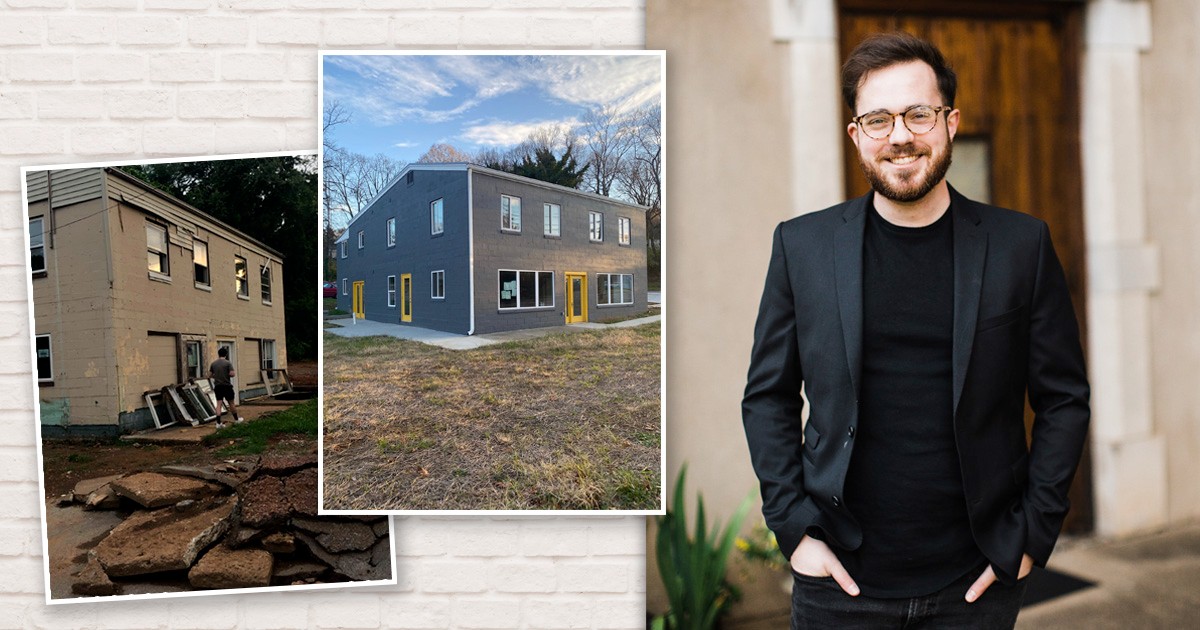 Small churches can be found everywhere―on back roads, windswept hills and in some of the oddest, most geographically-isolated places that one wonders why anyone thought of planting a church in that spot to begin with. Small churches are nestled in small villages and towns, but also strive to survive in old suburban neighborhoods, inner cities and suburbs.
Small churches can be found everywhere―on back roads, windswept hills and in some of the oddest, most geographically-isolated places that one wonders why anyone thought of planting a church in that spot to begin with. Small churches are nestled in small villages and towns, but also strive to survive in old suburban neighborhoods, inner cities and suburbs.
The 1998 statistics from Outreach Canada reveal that most denominations are “blessed” by a preponderance of small churches (75 or fewer attendees). My own denomination, the Baptist Convention of Ontario and Quebec, reports that nearly 75 percent of its churches are classified as small.
Small churches often operate in small buildings with a sanctuary that can hold about 150 people, a basement hall, a tiny kitchen, a furnace room and washroom. But some small churches today try to exist in buildings once meant to hold several hundred people. These large buildings are expensive for upkeep and impossible to renovate. They have dozens of rooms, halls, gyms, classrooms and facilities and a huge heating system―all a painful reminder of days gone by.
A small church is not some sort of stunted large church, nor a failed church, nor a miniature bonsai version of a larger church, nor a big church just waiting to grow up. It is sometimes possible for a small church to transform into a larger ministry because of new circumstances, new contexts, unexpected internal or external developments or a new vision from leadership. But for the most part small churches are species unto themselves.
Being small is not a virtue in itself. But it is important to recognize that even small churches, despite many obstacles and challenges, can be used by God to proclaim the Good News. For this reason, small churches need to strive to be spiritually healthy and productive in mission. God has called them to bear fruit and thrive. “Whoever is faithful in a very little is faithful also in much … ” (Luke 16:10 NRSV).
The New Testament church gathered in small groups in their own homes for fellowship, worship, mutual caring, prayer and service. At their best, small churches still exemplify the heart of this biblical model: “Day by day, as they spent much time together, they broke bread at home and ate their food with glad and generous hearts, praising God and having the goodwill of all the people … ”(Acts 2:44-47). At their worst small churches can become reclusive, apprehensive and inward looking―social enclaves that are bound up by their past.
Small Church Distinctives
I want to explore five characteristics of small churches that can be both strengths and weaknesses.
1. The small church is a single-cell, family system. Small churches work, plan, worship, fellowship and socialize together as a single entity. You don't need small groups in a small church―it is a small group. This means that no one is excluded. Everyone is invited to attend events no matter their age, gender, marital status or background. My first church was a country church, and whether it was the yearly smorgasbord fundraiser, the hamburger booth at the local fair, church clean up days or the softball team, we knew that we were all in it together.
This family-like bond unites the people of small churches in close relationships. A pastor must be careful about what he or she says about someone else in the church because often members of the church are related to one another. Everyone tends to know everyone else's life, history and goings-on. Because of this intimacy―a complex intimacy full of pain and joy―members of small churches rely on each other to sustain the life and fellowship of the church. Every person is needed, there is a job for everyone and people are missed when they are not there.
2. The small church is driven by loyalty and relationships. People care for one another and tend to overlook certain character flaws. They share in each other's joys and sorrows. They fight, bicker and hold grudges for years, but when push comes to shove they know that all they have is one another. This means the same people often end up doing several jobs within the church. The same leaders will teach in the Sunday school, show up at prayer meeting, chair a committee, start the furnace on a cold winter morning, sweep the walk, write the pastor's paycheck and represent the denomination at the annual meeting. It is tiring but, as in any family, somebody has got to do it.
Those who have an investment in that church, by virtue of family ties or personal history, are deemed to be a part of that church's family―no matter what! Even in a contentious church meeting, “family” concerns will take precedence over other values. Small churches will often appoint people to leadership positions in the church, not because they are pillars of Christian faith and virtue, but because they are part of the family. The greater the personal investment, the more likely that status and privilege may be given to that person, usually giving them a stronger voice in the church's everyday decision making.
There are many threats facing small churches today: a lack of finances, too few workers, aging congregations, poor vision or mission strategy. But the small church has an incredible tenacity when it comes to survival
3. The small church works informally. Even if there is a formal system of governance, much of the decision making happens in an unofficial, flexible way. Real decisions are more apt to be made on the front stoop of the church, or in somebody's kitchen, or by a few well placed phone calls. These informal conversations often have more power than any formal decision taken by a board or committee.
The real power is in the hands of the matriarchs and patriarchs of the church who usually assume that they have the best interests if the church at heart. They have invested their whole lives in supporting their church. As the main contributors and workers, they claim a rank and privilege with which it is hard to argue. Even if they are not in the official circle of decision making (a rare occurrence) they often have an uncanny way of shaping the decision making within the church.
4. The small church is conservative. It preserves its traditions, its stories, its history, and builds upon what has worked in the past. It is careful about change. It loves its heritage. It loves to tell its stories. It will protect itself from risks and experiments. It will cast a skeptical eye on uninvited and unwelcome interference and intervention from outside sources―even from its own denomination. Its building is a part of its sacred story―don't try to mess with it! By and large small churches also tend to be more theologically conservative, at least in rural and small town settings.
5. The small church is durable. There are many threats facing small churches today: a lack of finances, too few workers, aging congregations, poor vision or mission strategy, loss of young people, stagnation and loss of leadership. But the small church has an incredible tenacity when it comes to survival. Even though I am deeply concerned that small churches are an endangered species, they constantly amaze me in their ability to overcome the odds and continue on. They have a fierce pride in their own self-reliance and self-sufficiency. They have an incredible sense of inner purpose and self-worth. Just when one thinks that a church is about to close the doors for good, the people rise up and have a new burst of spiritual vitality and growth.
The Future of Small Churches
I see a few interesting trends emerging for the small church over the next few decades. There will be fewer, full time pastors. Instead the small church will find its pastoral leadership coming from bi-vocational pastors and part-time leaders. Their pastors may choose to live in a larger nearby centre rather than in the community itself, and they may even be responsible for multiple charges. In some cases, pastors of small churches will be those who have entered the ministry as second careers. They may be people in their 50s or 60s―men and women who are delighted to do ministry in small churches and are able to live off their pensions.
Small churches will look for something else than the so-called professional, highly trained and educated pastoral leadership that they have always had. Due to their pragmatism and practicality, small churches will accept, more eagerly, lay leaders who want to serve in ministry without all the trappings of formal pastoral training. They will call leaders who are simply excited about doing ministry, preaching the Word and helping them to be the Church.
Small churches will look for ways to carry on the ministry themselves, even if they have no pastor. New gifts will be found among their own people. They will find amongst their own members those who can do visitation, carry on the programs and even preach if need be.
It is my hope that denominations will continue to invest in small churches. Perhaps we can reawaken this key part of our witness―small, dynamic groups of Christians witnessing and proclaiming their faith in Jesus Christ.
We need to be intentionally focused on leadership development and training for clergy and lay persons in small church ministry. Our current pastors need help in dealing with the frustrations, loneliness and stress of pastoring a small church. We might encourage our senior, more experienced pastors who are closer to retirement to take on small churches. There are many ways that our denominations can support small churches.
Small churches are ideally fitted as one of God's responses to this postmodern age where relationships, intimacy and meaning have become so important. “The day of small things shall rejoice” (Zechariah 4:10 NRSV).
Rev Dale R. Soble is the senior minister of Murray Street Baptist Church in Peterborough, Ontario.









Comment
On Thursday, April 2, 2009, Cheryl Toliver said:
Leave a Comment